Despite concerns about declining enrollment at community colleges, associate completion volumes have held relatively steady over the past five years, with just over one million degrees awarded each year. After declining 1.7 percent from 2019 to 2020, associate completions rose 1.5 percent from 2020 to 2021. All growth has been in the online sector. Online completions accounted for 15 percent of all associate completions in 2021, up from 13 percent in 2016.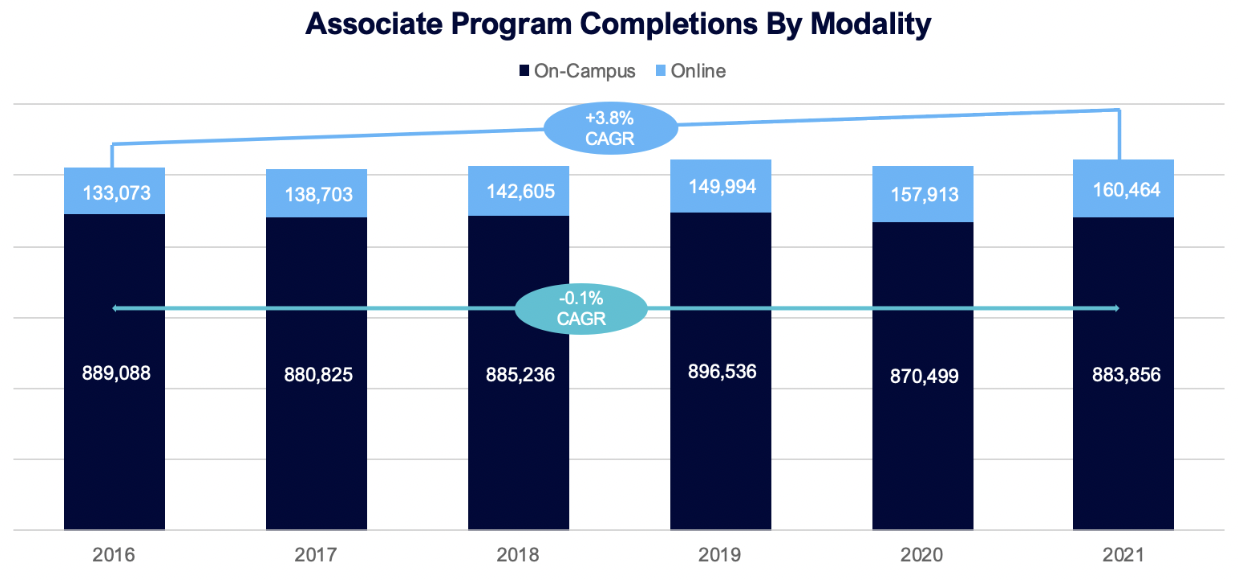
Source: Gray’s Program Evaluation System (PES)
Public Institutions Dominate
Public institutions awarded the most associate degrees by far, accounting for 88 percent of all associate completions in 2021. Within the public sector, two-year colleges still dominate, with over 655k completions in 2021. Four-year public institutions reported 266k associate completions in 2021. The share of completions awarded by private for-profit institutions has dropped from 10 percent in 2016 to 7 percent in 2021. Private, not-for-profit institutions accounted for 5 percent of associate completions in 2021.
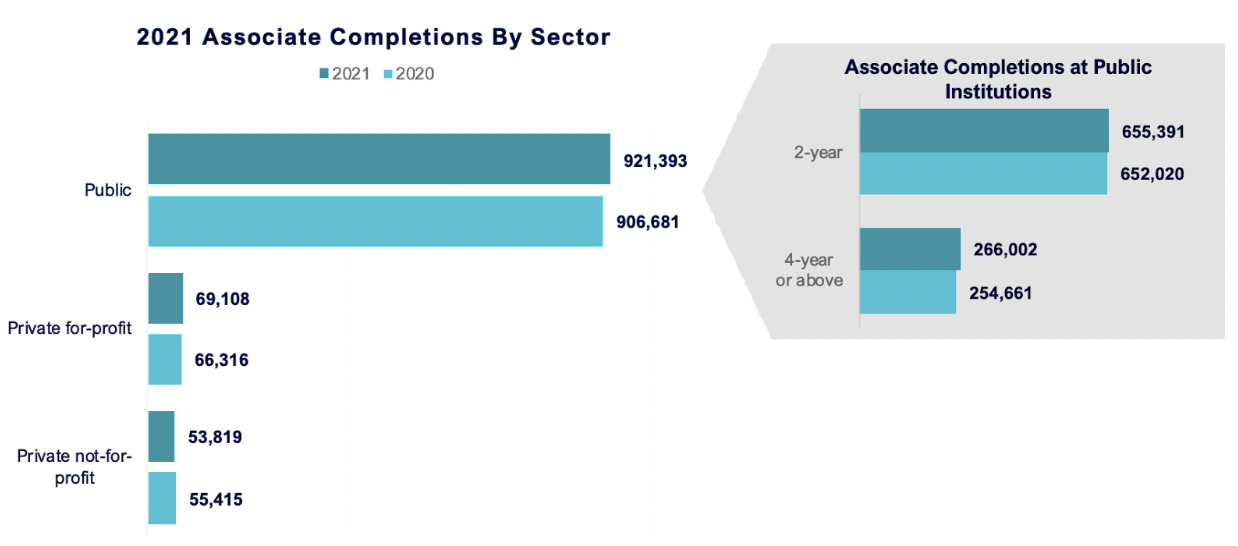
The Big Three Disciplines – Liberal Arts, Health, and Business
At the discipline level, programs in the liberal arts disciplines are the most popular, accounting for 38 percent of all completions. This discipline includes programs classified as Liberal Arts, General Studies, and Humanities. Programs in health-related fields and professions accounted for 18 percent of all associate completions in 2021, followed by business-related programs with 10 percent of completions.
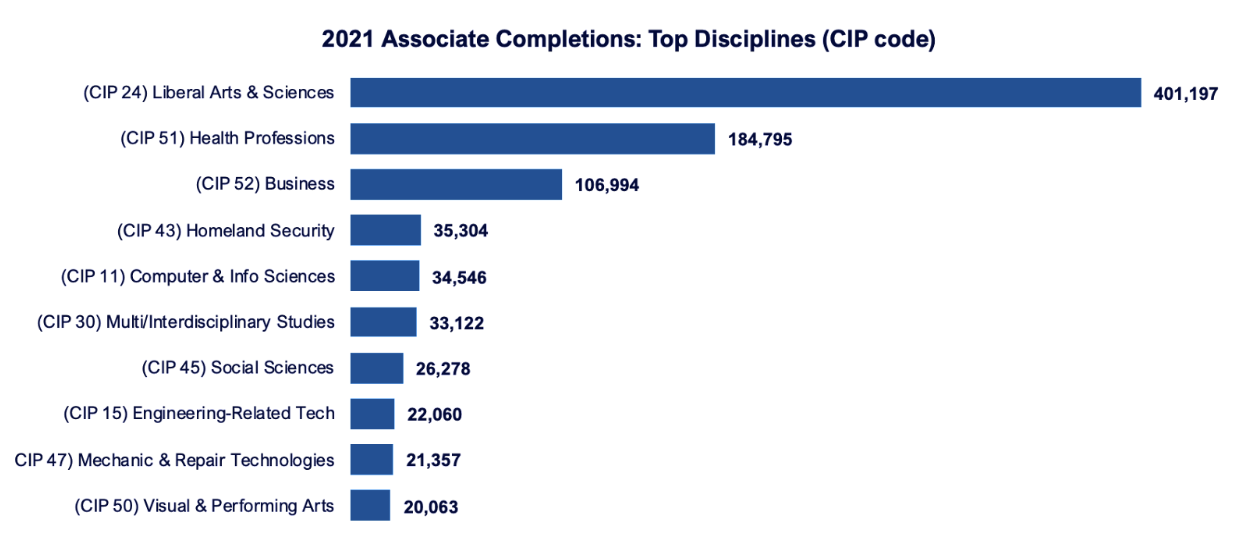
Source: Gray’s Program Evaluation System (PES)
Interestingly, some smaller disciplines experienced double-digit percentage growth in completions from 2020 to 2021, including biology, transportation, psychology, education, and military technologies.
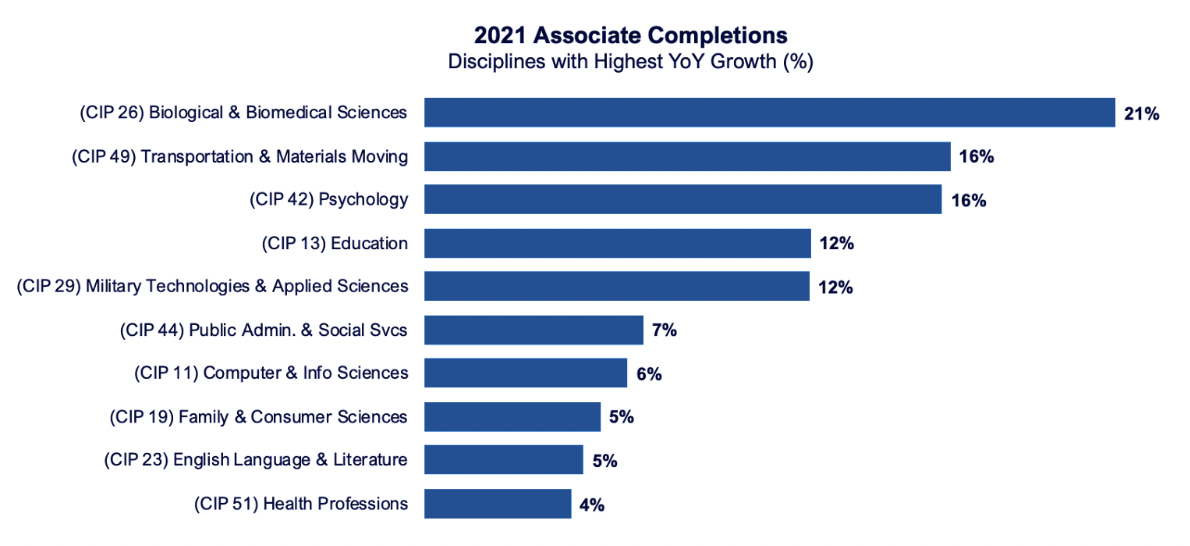
Source: Gray’s Program Evaluation System (PES)
The 10 Largest Programs
Among associate programs, Liberal Arts and General Studies had the highest number of completions in 2021. Registered Nursing was the third-largest program with 87k completions, followed by Business Administration with almost 78k completions. Completions grew year-over-year in both Registered Nursing and Business.
Psychology made the top 10 associate programs by completion volume in 2021 with 16 percent year-over-year growth. At the bachelor’s level, Psychology completions grew 4 percent year-over-year.
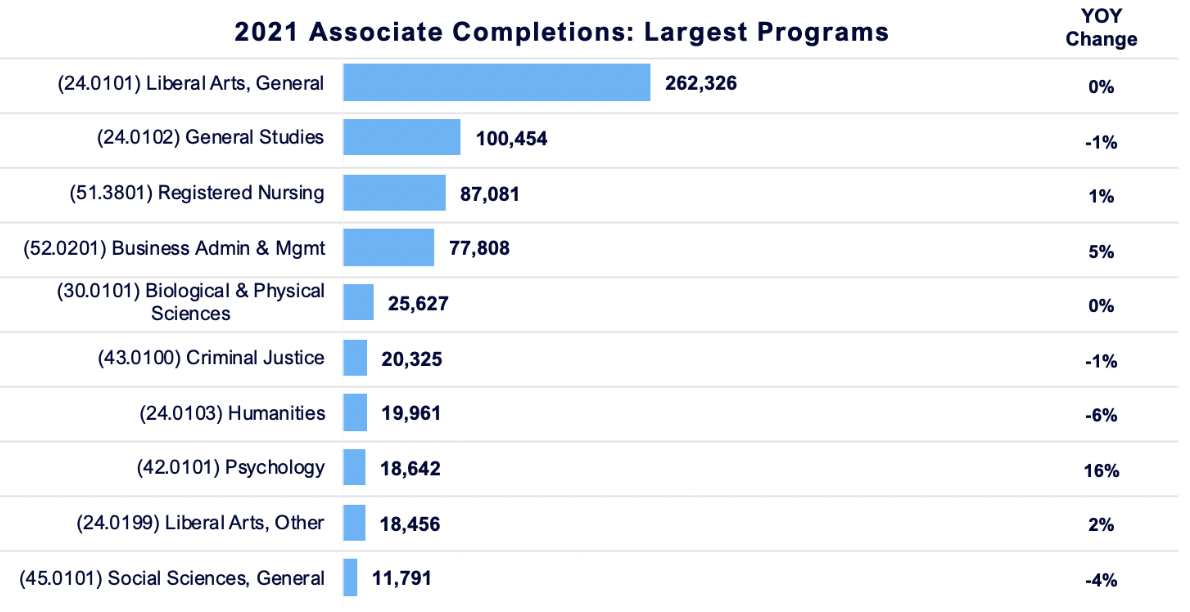
Source: Gray’s Program Evaluation System (PES)
Fastest-Growing Programs: Unit Growth
Business completions increased more than any other program, adding over 3,900 graduates. Psychology took second place with over 2,600 more graduates than it had in 2020. Health-related programs accounted for half of the fastest-growing programs by unit growth. These included Health Services/Allied Health, Physical Therapy Assistant, Dental Hygiene, Occupational Therapy Assistant, and Nursing. Computer Science and Early Childhood Education programs rounded out the list.
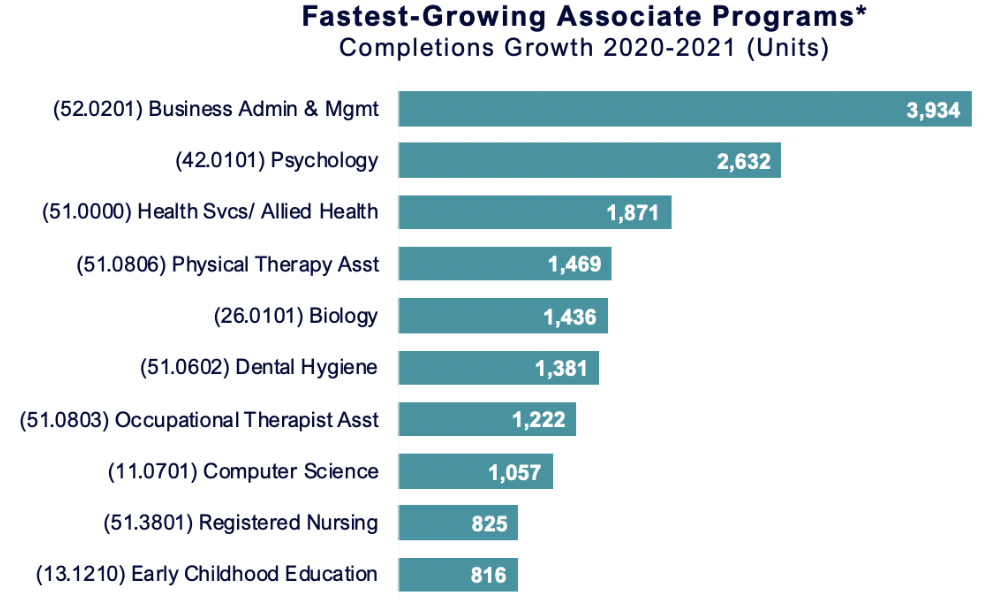
*Excludes programs with fewer than 100 completions in 2021.
Source: Gray’s Program Evaluation System (PES)
Online Programs
Lastly, let’s look at online programs. The largest online programs include many of the same programs on the top 10 list for overall completions, with a few notable additions – namely Medical Billing & Coding, Bookkeeping, Medical Assistant, and Early Childhood Education.
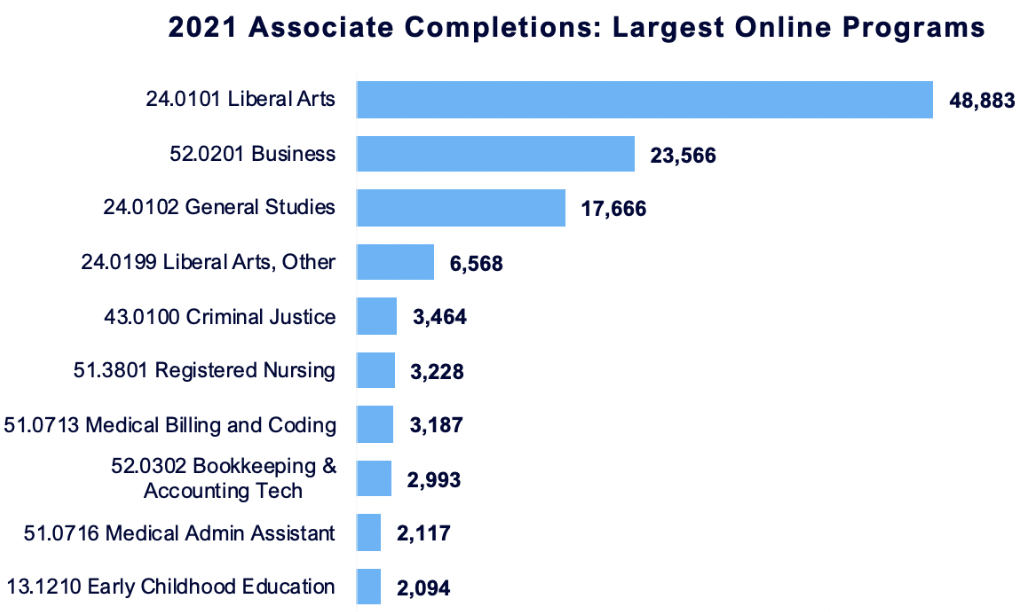
Source: Gray’s Program Evaluation System (PES)
Want to see more data like this? Previous posts in this series, as well as other Espresso blogs, can be accessed here.




